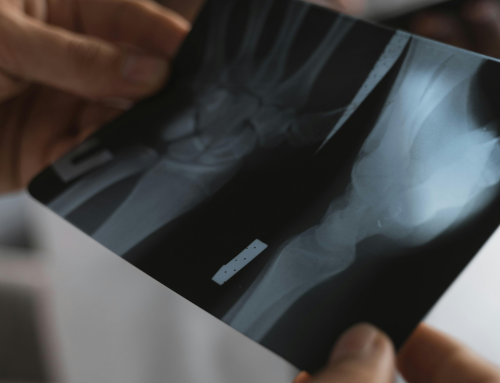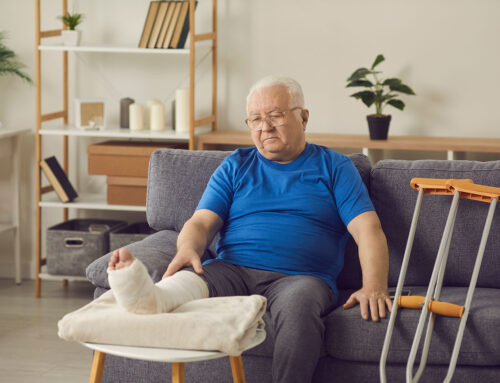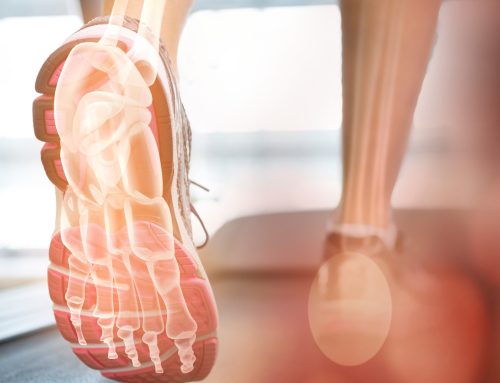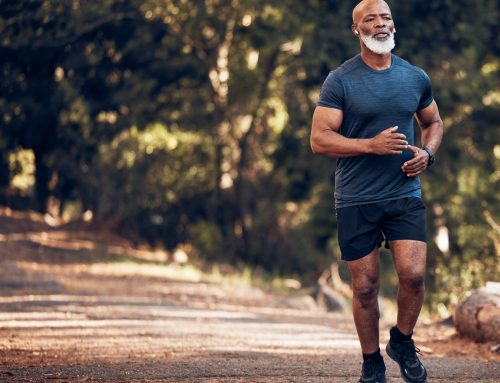As we age, our bones become weaker and more susceptible to fractures. Many older people develop osteoporosis, at least one in three Canadian women, and one in five men, will sustain a bone fracture because of osteoporosis during their life, reports Osteoporosis Canada.
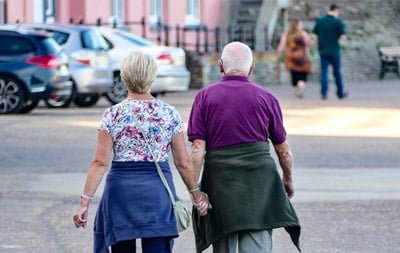
Seniors may begin avoiding exercise with age for fear of injury or falling, but staying active is key to maintaining good bone health and even helps prevent falls. Those with osteoporosis should ensure they are following an exercise regime that includes strength training, balance exercises, posture awareness, and aerobic activity for best bone health.
What is osteoporosis?
Osteoporosis is a bone disease characterized by low bone mineral density and the gradual deterioration of bone tissues. Bone mineral density is determined mainly by genetics, but there are a number of risk factors that weaken bones, including smoking. Osteoporosis can also occur due to other health conditions, such as anorexia, kidney disease, and hyperthyroidism, or from the use of certain medications, like some chemotherapy, antiseizure, and antidepressant medications.
The hormones estrogen and testosterone, present in both males and females, are essential for regenerating bone cells and maintaining bone formation. Women are more likely to suffer from osteoporosis than men because estrogen levels plummet after menopause. As men age, they don’t experience the same dramatic of a loss of testosterone.
Our bones reach peak density around the age of 30 and then begin to become weaker and thinner. Women may reach that peak density sooner and lose bone mass faster. Osteoporosis can be debilitating as it’s a major cause of disability for senior women
The importance of exercising with osteoporosis
Elderly people are most likely to break a bone from falling. This is because as we age, our sense of balance and muscle strength generally gets worse. Most commonly, fractures of the wrist, spine, shoulder, and hip are seen as a symptom of osteoporosis.
Osteoporosis Canada advises that all adults get at least 150 minutes, that’s two and a half hours, of aerobic physical exercise a week. The organization has developed a series of exercise recommendations for people with osteoporosis or spine fractures.
“Strength training exercises are key to maintaining strong bones and increasing muscle
strength,” said Professor Lora Giangregorio, University of Waterloo, in a press release. She developed the recommendations with experts, researchers, and clinicians in Canada, Australia, Finland, and the USA.
“There is clear evidence that performing challenging balance exercises can reduce falls, especially if performed most days of the week. We propose a shift away from aerobic-only exercise regimes to those that emphasize strength training and balance training in addition to aerobic training, to achieve the greatest health benefits.”
People who are older or have osteoporosis should prioritize exercise to ensure they maintain high levels of strength in their lower limbs and good balance, helping to prevent falls. Exercise strengthens muscles and bones, helping protect the spine. It also decreases the risk of fracture by slowing the rate of bone loss and can decrease pain.
Before you begin any new exercise regime, talk with your doctor or physical therapist about what will work best for you. Your healthcare provider may do a bone density measurement or fitness assessment to test your current health levels.
Types of exercise to focus on
There are four types of exercise that people with osteoporosis should do to keep safe and healthy, which we will go into below. These include:
- Strength training
- Balance exercises
- Posture awareness
- Aerobic physical activity
Strength training
People with osteoporosis should aim to do strength training exercises at least two days a week. Focus on exercises that strengthen the legs, arm, chest, shoulders, and back.
Strength training exercises can include the use of:
- Weights
- Exercise bands
- Resistance training equipment
- Lifting your own body weight
- Functional movements, like rising on your toes
Ensure you learn how to do the exercises safely and in good form. Try squats, step-ups, wall pushups, lifting free weights or using a weight machine to strengthen your muscles. Start with 8 to 12 repetitions per exercise, then gradually make it more difficult. Be careful to not twist your spine, especially when using weight machines, which can cause damage or a fracture.
Balance exercises
Working on bettering your balance and coordination keeps you more stable on your feet and will help prevent falls. Try to do simple balance exercises every day; ensure you are using a support such as a wall, chair, table, or counter to protect yourself.
Balance exercises can include:
- Shifting your weight from toes to heels while standing or from one foot to the other
- Holding a support, stand on one foot, lean side to side or front to back
- Walking heel to toe in a line
- Doing Tai Chi
- Trying line dancing
Posture awareness
Posture exercises keep you standing tall, even with osteoporosis. These exercises strengthen the muscles in your back and protect your spine, helping to prevent fractures. Be cognizant of your body parts — your ear, shoulder, elbow, hip bone, knee, and ankle should all line up when standing.
Practice good posture by standing or sitting and looking at yourself in the mirror or laying on the floor in a shavasana yoga pose. Check-in daily to improve your posture.
Aerobic physical activity
Get your heart beating faster by doing aerobic physical activities for at least ten minutes at a time. These exercises strengthen the bones in your legs, hips, and lower spine and improve your cardiovascular health.
Depending on the strength of your body and bones, you may wish to avoid high-impact exercises like jumping, running, or playing tennis which can cause fractures. Non-weight-bearing activities like swimming or cycling are great for your health but do not help the bones to slow mineral loss. Ensure you also add weight-bearing exercises to get the best benefits.
Excellent aerobic physical activities for people with osteoporosis include:
- Walking
- Stair climbing
- Gardening
- Low-impact aerobics
- House cleaning
Weight-bearing aerobic activities should be done five or more days per week. It’s important to choose exercises that you not only enjoy but that you feel safe doing. If you’re concerned about your balance, use a walker or cane when in movement.
Staying fit to prevent fractures
Osteoporosis Canada has a number of excellent resources on their website for their program “Too Fit to Fracture: Managing Osteoporosis through Exercise”. View videos on how to safely do everyday activities and download an exercise booklet with worksheets to track your progress.
We hope you live a long and healthy life, free of fractures. But if you do break a bone due to osteoporosis, low-intensity pulsed ultrasound can be used to heal the fracture faster and get you back to your exercises sooner.
How do you stay fit with osteoporosis? Comment below with your best exercise tips and any questions you have about keeping your bones strong and healthy throughout life.

